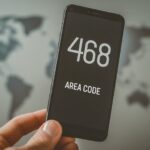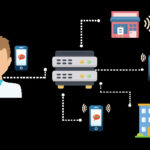The 833 area code is a phone prefix that frequently sparks confusion because, unlike most area codes, it is not tied to a specific city, state, or geographic location.
Area code 833 is one of seven official toll-free prefixes used across the North American Numbering Plan (NANP), which includes the United States, Canada, and several Caribbean nations. It was introduced in 2017 to meet the high and increasing demand for toll-free lines by businesses.
This expert guide will clarify the unique status of the 833 area code, explain its purpose, detail how to dial it, and provide essential advice on how to handle potential scams originating from this prefix.

The Non-Geographic Nature of Area Code 833
The 833 area code functions identically to the more familiar 800, 888, 877, 866, 855, and 844 prefixes.
Key Facts About Area Code 833
| Detail | Information |
| Status | Toll-Free (Non-Geographic) |
| Location | All of the United States, Canada, and NANP Territories |
| Cost to Caller | Free (The receiving party pays for the call) |
| Purpose | Customer service, sales lines, and national business presence. |
| Time Zone | None (Since it covers multiple time zones) |
The defining feature of a number starting with 833 is that the caller is not charged for the call, regardless of their location within North America. The business or entity that owns the number is responsible for all associated fees.
Why Businesses Choose 833 Numbers
The 833 area code is increasingly popular with businesses, especially since the older 800 and 888 prefixes have become largely exhausted. Key reasons include:
- National Presence: An 833 number projects the image of a large, established company that operates nationally or internationally, as it is not tied to a local area.
- Vanity Numbers: Many desirable “vanity numbers” (e.g., 1-833-FLOWERS) are still available in the 833 range, making a business line easy for customers to remember.
- Customer Convenience: Offering a toll-free number removes the cost barrier for customers, encouraging more inbound calls for sales and support.
How to Dial an 833 Number
Calling a number with the 833 prefix is the same as calling any other toll-free number in the North American system.
- Dialing Format: Always dial 1 + 833 + 7-digit number. (Example: 1-833-555-1234).
- From a Landline/Mobile (US/Canada): The call should connect without incurring long-distance charges on your bill.
Consumer Safety Alert: 833 and Scams
While the 833 prefix is legitimate and used by thousands of reputable organizations (banks, insurance companies, major retailers), it is highly favored by scammers.
Why Scammers Use Toll-Free Codes
- Credibility: The 833 prefix instantly lends an air of legitimacy and professionalism, as callers often associate it with large customer service centers.
- Ease of Acquisition: These numbers can be cheaply and easily obtained and activated by anyone, including fraudulent organizations and individuals.
Actionable Steps to Prevent 833 Scams
If you receive an unexpected call from an 833 number:
- Do NOT Give Personal Information: Never provide passwords, Social Security numbers, bank account details, or credit card numbers to an unsolicited caller, even if they claim to be from a well-known company.
- Verify the Caller: If the caller claims to be your bank, utility company, or a government agency, hang up immediately. Look up the official toll-free number for that organization (from their website or a recent statement) and call them back directly to verify the request.
- Do Not Call Back Missed Calls: If you see a missed call from an 833 number you don’t recognize, do not return the call. While the call is free, engaging with unknown numbers confirms to robocallers that your line is active, which can lead to more spam.
- Use Call Blocking Tools: Use your mobile carrier’s spam protection app (like T-Mobile Scam Shield or Verizon Call Filter) to automatically flag or block calls identified as high spam risk.
Frequently Asked Questions (FAQ)
What is the difference between 833 and 800?
The only functional difference is their date of creation and availability. 800 was the first toll-free prefix (launched in 1967) and is almost completely unavailable. 833 is the newest toll-free prefix (launched in 2017) and currently has the best availability for new businesses looking for vanity numbers. All toll-free codes (800, 833, 844, 855, 866, 877, 888) function exactly the same way: they are free for the caller.
Is 833 part of the US or Canadian phone system?
Both. Area code 833 is part of the North American Numbering Plan, which covers the United States, Canada, and various US territories. You can dial an 833 number for free from anywhere within this entire network.
Can I send text messages to an 833 number?
Yes. Many modern VoIP service providers allow businesses to “text-enable” their 833 numbers. If the business has enabled this feature, you can send and receive SMS messages to or from the toll-free number.
Conclusion
The 833 area code is a versatile and essential prefix for businesses operating throughout North America, offering cost-free access to their customers. While its non-geographic nature can be confusing, understanding its function as a toll-free number is the key takeaway.
Be mindful that scammers heavily rely on this prefix for legitimacy; practice healthy skepticism and never provide sensitive personal data to an incoming call from any unknown 833 number.


